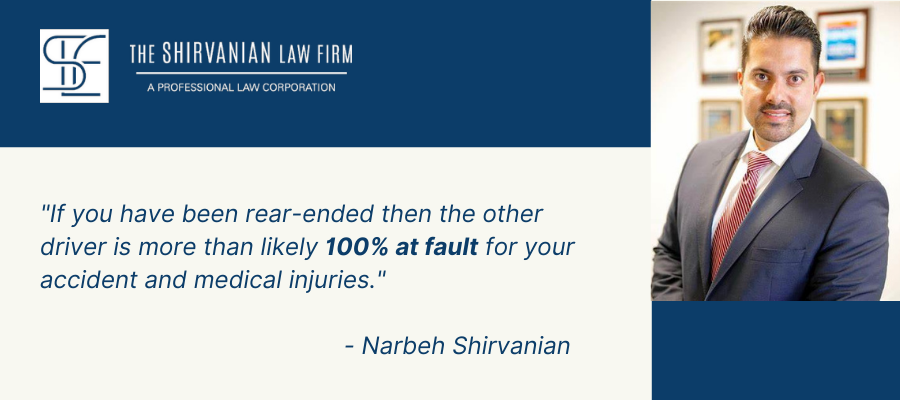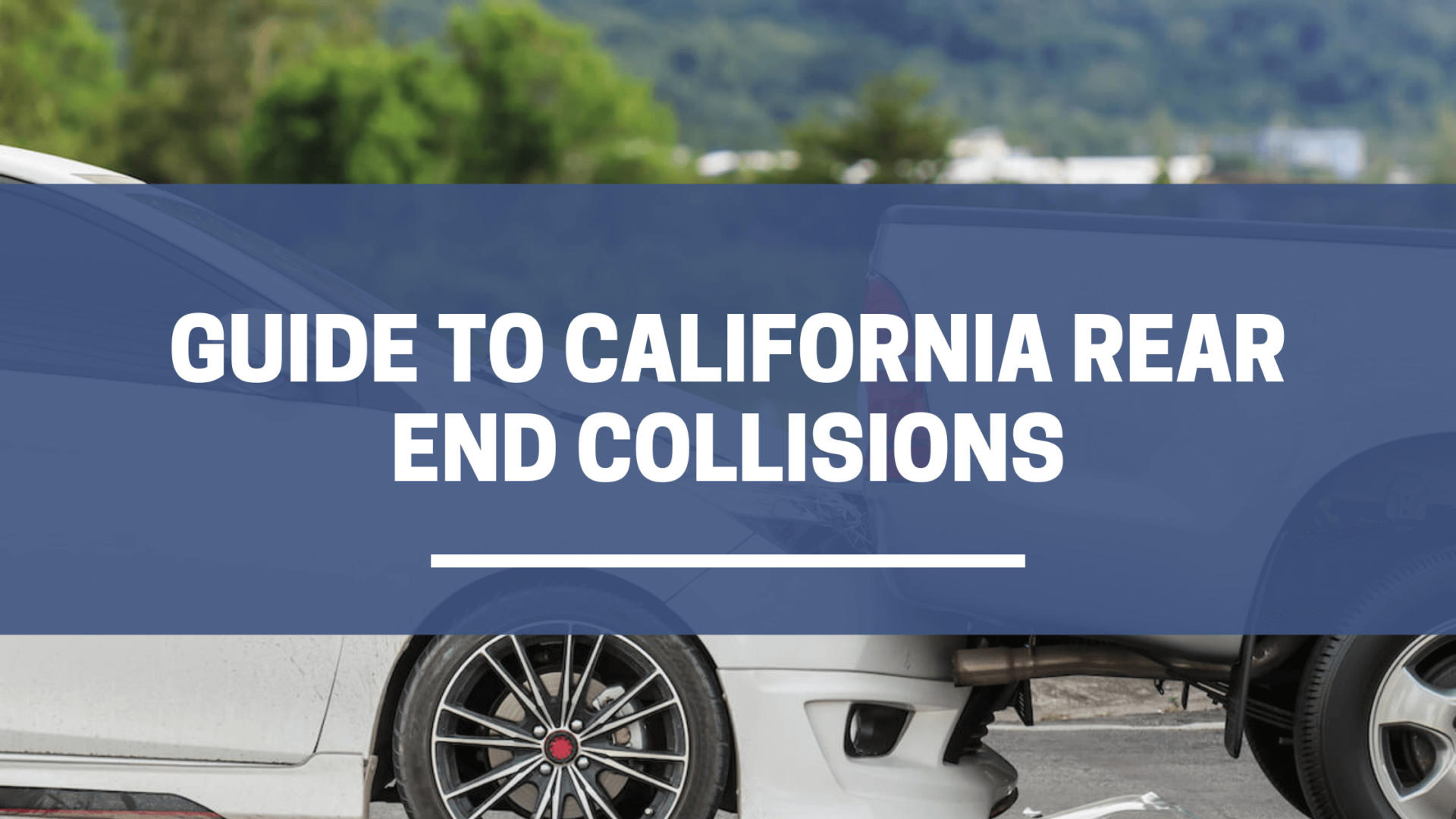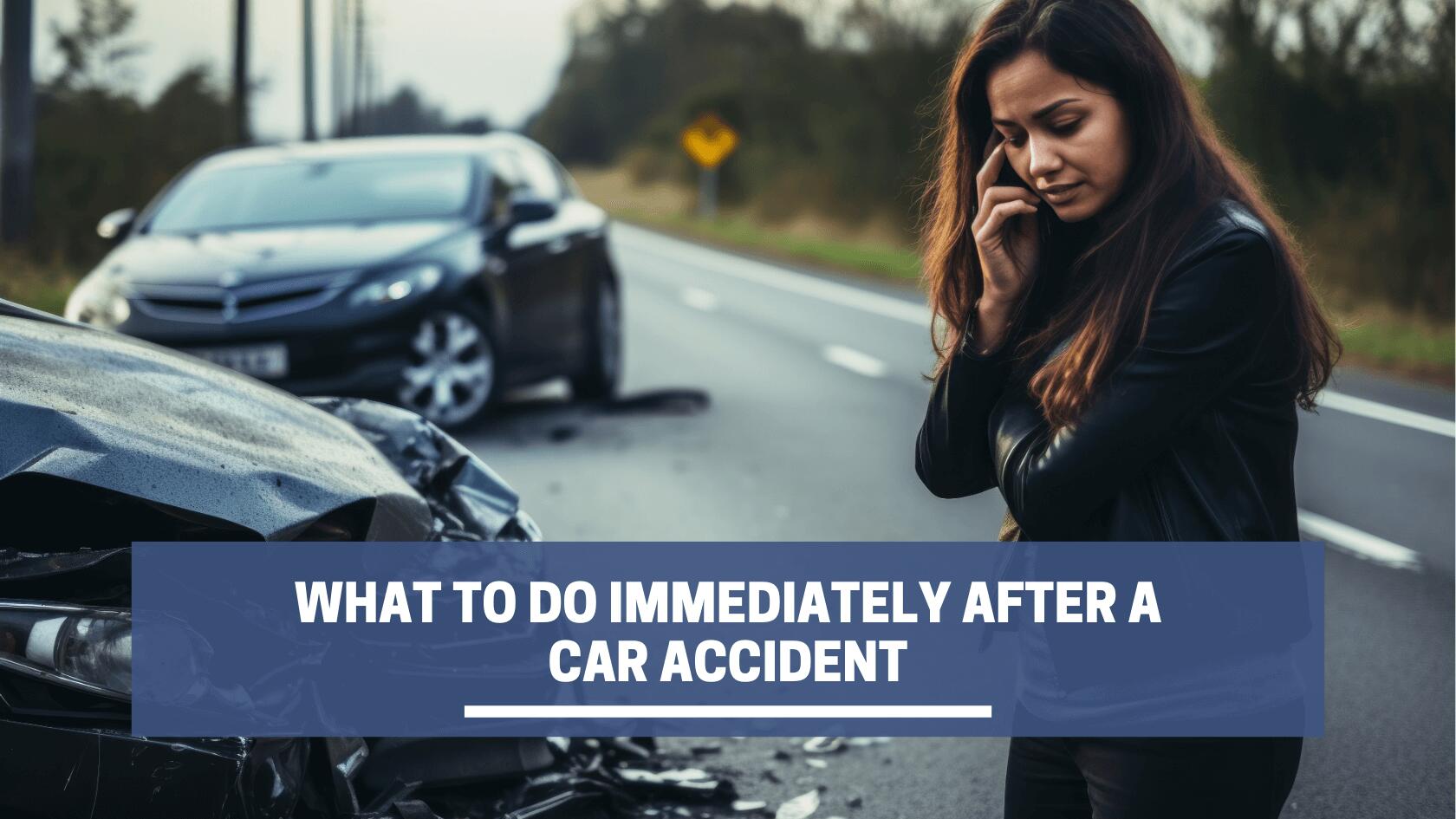Car accidents can leave you injured and out of work. You may feel stressed from bills piling up from medical care and car repairs. You don’t have to be involved in a large pile-up or severe accident to need legal assistance. Even minor rear-end collisions cause injuries and damages you may be unable to afford on your own. A car accident lawyer can help you file claims to receive compensation after your collision.
California Rear End Collisions
Rear end collisions are the most common type of car accident, accounting for 29% of accidents involving serious injuries. They can be scary to experience because drivers don’t see the other car coming and can’t avoid getting hit.
Most rear end accidents occur when one car is stationary or moving slowly just before the accident occurs. This includes drivers who are approaching or are stopped at traffic lights and stop signs. The other driver is traveling at higher speeds and doesn’t have enough time or space to stop their vehicle before hitting the other car from behind.
Who’s at fault?
Many rear end collisions are caused by driver negligence. The driver may be on their phone or not paying close enough attention to notice traffic is slowing down or stopped. Other drivers are following cars too closely, called tailgating, which does not leave them enough time to stop their car before getting into an accident.
Rear end collision fault almost always belongs to the driver who hits the other car from behind. California law prohibits drivers from following other cars too closely. The law doesn’t specify an acceptable length but states that drivers need to follow at a reasonable distance at all times, in all road and weather conditions.
Insurance companies consider negligence when determining who’s at fault in rear-end collisions. The driver of a vehicle that was hit might be found at fault if their negligence caused the accident. Either driver may be found negligent if they are:
- Speeding
- Following too closely for conditions
- On their phones
- Distracted by passengers
- Driving while drowsy or intoxicated
- Not maintaining their vehicle
- Pulling out unsafely in front of cars
- Braking suddenly
- Intentionally trying to get hit
- Reversing their car into traffic

3 Car rear end collisions
It can be harder to determine liability when multi-car pile-ups happen. When a rear end collision involves three cars, the driver who initially caused the accident is the party at fault. This could be the lead driver or the second driver who hit the lead driver, depending on who was more negligent.
Law enforcement officers and insurance companies conduct thorough investigations after multi-car accidents to help identify any negligence and determine which driver is at fault. California’s comparative negligence law means drivers can file claims and receive damages from other driver’s insurance companies even if they were partially liable for the accident.
Rear End Collision Damages
Drivers who are involved in rear end collisions can seek economic and non-economic damages to compensate for their losses and suffering. The type and amount of damages you can seek depend on the facts of your accident. More serious accidents can lead to the plaintiff receiving higher amounts of damages.
Compensatory damages you can seek in a rear end collision include:
- Bills from ambulance transportation and ER care
- The cost of physical or occupational therapy needed
- Ongoing medical care and bills
- Prescription medication costs
- Loss of wages
- Loss of earning potential
- Any scarring or disfigurement
- Rear end collision repair costs
- Pain and suffering
Common Injuries From Rear End Collisions
Concussions, back injuries, neck strains, and whiplash are common following rear end collisions. These injuries can be challenging to treat and can cause chronic pain. The involuntary jerk of your head, neck, and body from the rear end collision is what causes these types of injuries.
High speeds can cause serious injuries and deaths, but even minor rear end collisions may cause significant damage to your body. This includes whiplash; symptoms may not appear until hours or days after your accident.
Symptoms of whiplash from rear end collision
Whiplash happens when your body moves faster than your head, causing your neck muscles to stretch and compress very quickly to move your head forward. Symptoms of whiplash may appear instantly or take time for you to notice them.
Common symptoms of whiplash include:
- Neck pain
- Headaches
- Dizziness
- Muscle spasms or tension
- Blurred vision
- Ringing in your ears
- Problems sleeping
- Problems concentrating
- Memory problems
- Fatigue
Whiplash is a painful and debilitating injury that requires medical treatment for recovery. You may need to use a neck brace while you heal to help immobilize your neck. Your doctor might prescribe pain medications or muscle relaxants to treat your symptoms. People with whiplash may also need physical therapy to aid in recovery.
What is the Average Payout for a Rear End Collision?
Payouts for rear end collisions vary; there is no average settlement amount. Your settlement will be based on the collision’s severity and injuries caused. It also depends on the amount of insurance coverage the other driver has. You may see a payout of a few thousand dollars to well over one million dollars, depending on the facts of your case.
Finding rear end collision settlement examples with details similar to your accident can help you determine what your payout could be. You can also use a settlement calculator to find an estimated payout for your rear end collision.
How Shirvanian Law Can Help
If you’ve been involved in a rear end collision, contact a car accident lawyer immediately. Your California rear end accident attorney can help you document and preserve the evidence needed for your compensation, including rear end collision photos and medical receipts.
Consider hiring The Shirvanian Law Firm to handle your case. Our rear end collision attorneys understand the seriousness of your case. We’ll fight on your behalf so you can make sure you’re getting the medical care needed for your recovery instead of dealing with insurance companies. Contact us today for a consultation of your case.
Rear End Collisions FAQs
Who is at fault in a rear end collision?
Typically, the driver who rear ends the lead car is at fault. However, the lead driver may be found negligent or at fault if their actions caused the other driver to hit them.
When is a rear end collision not your fault?
A rear end collision is not your fault if the other driver was intentionally trying to get hit, had faulty brake lights, or followed too closely to the car in front of them, causing a multi-car accident.
At what speed do airbags deploy in a rear end collision?
Airbags will deploy when the impact of a crash equals 10-12 miles per hour. They are designed to protect you during a front or side-impact crash, but the forces from a rear end collision also cause the front airbags to deploy.
What are the symptoms of a rear end collision injury?
Common rear end collision injuries include whiplash, concussions, and back or neck pain. You may not experience the symptoms of a rear end collision injury immediately, because the injuries can take time to develop and notice. These injuries can be serious and should be treated immediately.
How do I avoid rear end collisions?
You can avoid a rear end collision by leaving plenty of space in between the car in front of you at all times. You may need to leave more space if weather or road conditions are poor. You should also keep your car properly maintained, so your brakes and turn signals are working. Avoid driving while distracted and pay close attention to other drivers.
Do I need a lawyer for a rear end collision?
Yes, you should hire a lawyer after you’ve been in a rear end collision. They can help you gather and preserve evidence for your case and determine if negligence was involved. Your rear end collisions attorney can negotiate on your behalf with the insurance company so you can receive maximum damages.











